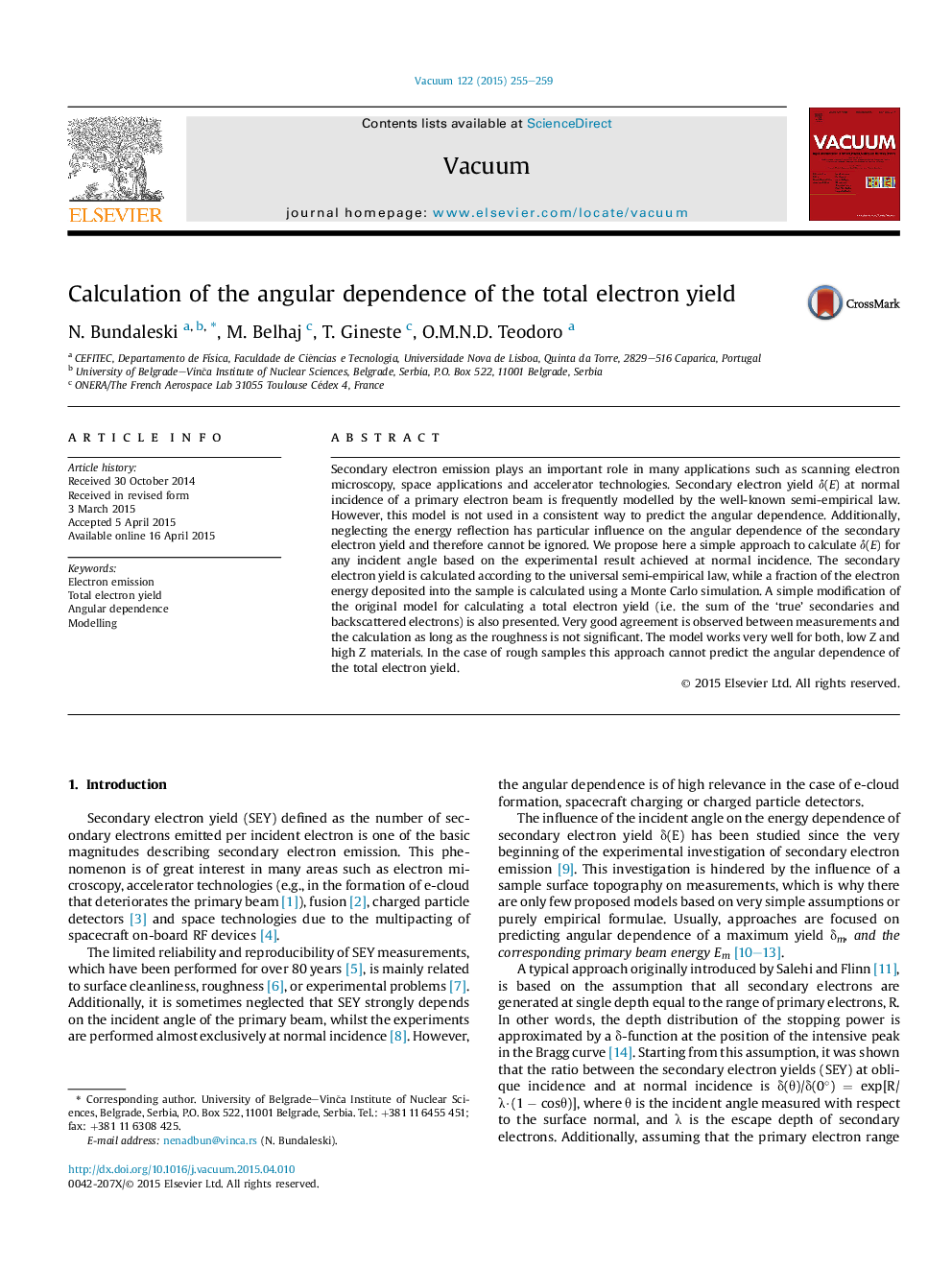| Article ID | Journal | Published Year | Pages | File Type |
|---|---|---|---|---|
| 1689804 | Vacuum | 2015 | 5 Pages |
•A simple approach to calculate angular dependence of SEY is introduced.•The calculation is based exclusively on experimental SEY at normal incidence.•The agreement with experiments is very good for smooth samples.•The model fails to predict angular dependence for rough samples.
Secondary electron emission plays an important role in many applications such as scanning electron microscopy, space applications and accelerator technologies. Secondary electron yield δ(E) at normal incidence of a primary electron beam is frequently modelled by the well-known semi-empirical law. However, this model is not used in a consistent way to predict the angular dependence. Additionally, neglecting the energy reflection has particular influence on the angular dependence of the secondary electron yield and therefore cannot be ignored. We propose here a simple approach to calculate δ(E) for any incident angle based on the experimental result achieved at normal incidence. The secondary electron yield is calculated according to the universal semi-empirical law, while a fraction of the electron energy deposited into the sample is calculated using a Monte Carlo simulation. A simple modification of the original model for calculating a total electron yield (i.e. the sum of the ‘true’ secondaries and backscattered electrons) is also presented. Very good agreement is observed between measurements and the calculation as long as the roughness is not significant. The model works very well for both, low Z and high Z materials. In the case of rough samples this approach cannot predict the angular dependence of the total electron yield.
